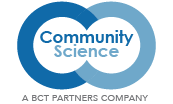For almost three decades, I have had the privilege of conducting research and evaluation studies of place-based strategies and initiatives. From LISC’s community building initiative to go beyond brick-and-mortar to the W.K. Kellogg Foundation’s investments in Mississippi and New Orleans, I have learned so much about place-based work. William Buster, former program officer at the Kellogg Foundation used to say, “place-based grantmaking is more than just making grants in a place.” It is a piece of wisdom I will always remember. It reminds me to step back in the evaluation and look at a place holistically; pay close attention to the relationships and connections among people, organizations, and systems; and examine how aligned the grantmaking is to be able to improve the conditions of the place.
I recently had the privilege of spending almost two days with many profound thinkers about place-based grantmaking to discuss what we have learned and how we can improve the next generation of this work. This convening was supported by The Colorado Health Foundation, Kate B. Reynolds Foundation, and the Ford Family Foundation. The conversations prompted me to look back at some of Community Science’s oldest evaluations of comprehensive community change initiatives to our most recent evaluation of The Colorado Trust’s Community Partnerships for Health Equity. What stuck out when I went back to these publications, spanning nearly 30 years, were these themes that repeatedly came up in our research and evaluation, questions to dive more deeply into, and assumptions we need to challenge.
- Community participants must be treated as equal partners in the place-based strategy and its evaluation. Funders, intermediaries, and evaluators continue to struggle with which community members can speak for their community, how to engage them, and what equal means when power is inherent in any relationship with foundations. What do we assume about community leadership and who community leaders are? What happens when community members act as gatekeepers or gate-openers and how can this impact the work on the ground, or when they think that the foundation’s desired outcomes neither realistic nor feasible?
- The place-based strategy’s goals must be aligned with how the work is being implemented, which must be aligned with the outcomes. There must be agreement about this alignment among all the stakeholders from the start as well as explicit understanding that flexibility and adaptation will be necessary. Who has the power to decide what alignment looks like? What are the lines of accountability? What do we assume about the competencies needed to carry out the work in different types of settings — urban, rural, and Tribal communities?
- Conflict is inevitable because people will be people, and any change process is fraught with power issues. People’s self-interests, egos, resources, relationships, and even jobs are at stake. Funders and intermediaries must have the expertise to manage and transform these conflicts. What happens when the conflict is with the foundation which should see itself as part of, not separate from, the community? What do we assume about conflict? When is it healthy? When is it harmful?
- Funders, intermediaries, evaluators, and community participants must be able to explicitly deal with frictions that are in part due to differences in race, class, gender, and sexual identities, and the power differences created by these identities. Again, conflict is inevitable because of these differences. How much time does everyone take in the beginning to really understand the history of a community and its people? Is everyone intentional about how they approach each and every relationship? What assumptions and biases underlie people’s relationship with one another and their actions?
- Capacities built and policy and systems change are both critical outcomes of place-based work, and the strategy must be aligned to achieve both. People’s struggle and advocacy to get what they want to improve the quality of their lives will always be ongoing. A policy can be passed or eliminated when leadership in public institutions change. A natural disaster might hit. Economic recession might cause employers to abandon the place and create unemployment. Community members will have to organize and fight back every time. What do funders need to be convinced of the equal importance of community capacity outcomes? What do we assume and understand about the change process that connects capacity to policy and systems change?
- No single evaluation can capture all the complexities of place-based change and the multiple levels of change, from individual to organization and community to system. Multiple smaller studies can be helpful in more deeply understanding the change processes and outcomes that are operating simultaneously. What simple infrastructure is needed to coordinate these studies? What are we assuming about the value of a single study to build the evidence needed to demonstrate a place-based strategy’s impact?
The context we are in today is certainly different from the decades before. The themes above continue to haunt place-based work with some slight nuances; for instance, the current emphasis on the word “equity” even though the work has always been about increasing fair access to resources and opportunities, strengthening capacities and conditions for people to be able to take advance of the access, and preparing organizations and institutions to be able to treat people with dignity and respect when they access the resources and opportunities that they have the rights to. Today, there is also more awareness of the disparities experienced by historically marginalized populations, more appreciation for qualitative data to help tell the whole story, and I hope, more attention to rural communities and the polarization that is happening in our nation. What does this mean for the future of place-based strategies? What do we need to do in the philanthropy, capacity building, and evaluation fields to ensure that we don’t repeat the same mistakes and instead, learn more quickly, and adjust to ensure the health and well-being of communities as our country experiences drastic change now and in the years to come.

About The Author
Kien S. Lee, Ph.D., President, has expertise in promoting equity, inclusion, and cultural competency for health, food security, civic engagement, and leadership development. Current evaluations include those with the Conrad N. Hilton Foundation, the Colorado Trust, and the W.K. Kellogg Foundation.
